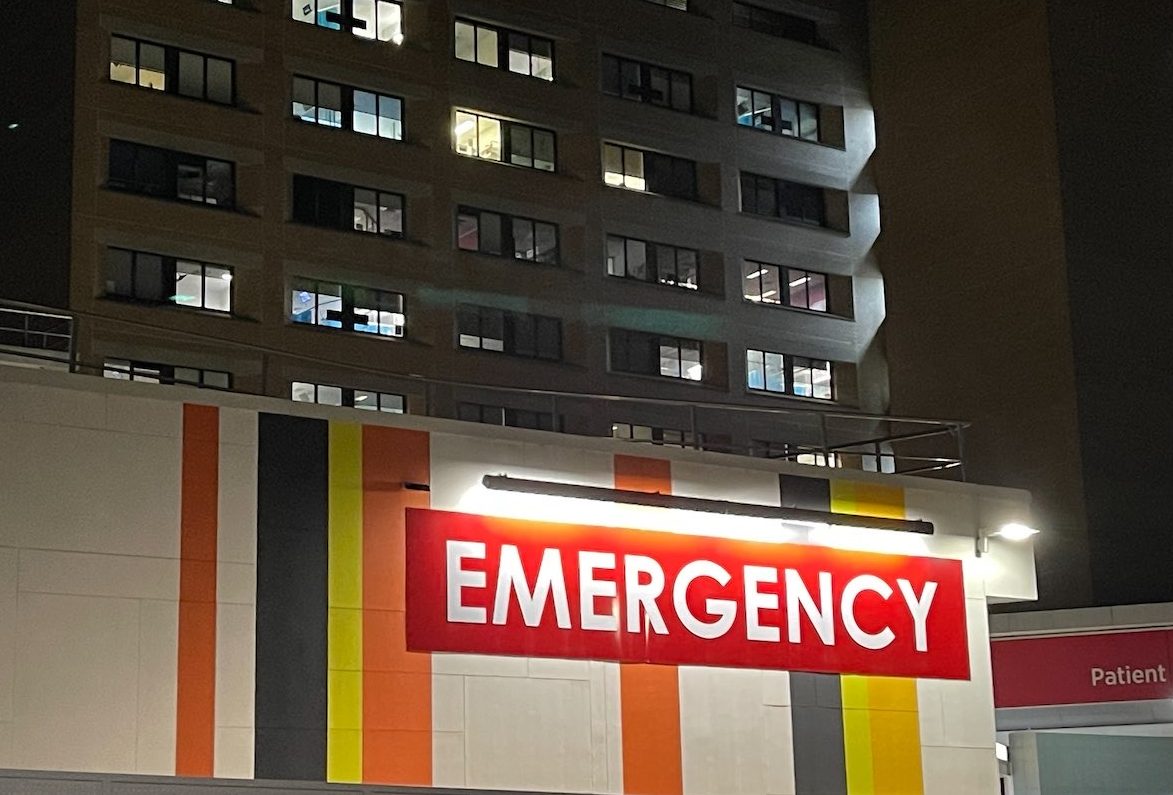
“The ACT’s hospital system has been deprived of the necessary beds and staff over the past eight years. Scarcity of resources is adversely impacting every part of the system.” JON STANHOPE & KHALID AHMED revisit the state of public health.
The significant blowout in elective surgery wait times in the ACT, particularly for Urgent, Category 1 patients, is not related to some nationwide phenomenon, as the Health Minister Rachel Stehen-Smith asserts.
Rather, it’s due to the repeated deferral of planned hospital upgrades, and a failure by her to deliver on an election promise to establish an elective surgery centre.
We have previously noted that cuts to services usually have a disproportionate impact on people from marginalised groups and the negative impact a blowout in wait times has on Aboriginal and Torres Strait Islander (ATSI) people’s access to treatment.
Across Australia, Aboriginal people wait longer for elective surgery compared to other Australians, as measured by median (50th percentile) wait times.
On that measure, while the ACT is not unique, it does not have the challenges in service provision that remote communities, in the states and the NT, with sizeable remote Aboriginal populations, face. In theory, there should be no discernible difference in the ACT in access between Aboriginal and non-Aboriginal peoples given our geographic compactness and urban population.
In 2021-22, the median wait time for elective surgery for ATSI people in the ACT was 50 days compared to 43 days for other Australians; ie, a 16 per cent longer wait for ATSI people. The national average variance was 28 per cent. SA had a variance of -7 per cent; ie, median wait times for Aboriginal people were shorter (in number of days) by that percentage.
However, in 2022-23, wait times for Aboriginal people in the ACT were 24 per cent longer than for non-Aboriginal people, while nationally it dropped to 14 per cent (see Chart 1).

Victoria was the only jurisdiction in which the variance in median wait times for Aboriginal people awaiting surgery compared to non-Aboriginal people was larger than in the ACT.
Coincidentally, there are remarkable parallels between the ACT and Victoria. Both have runaway debt and interest costs. Both have displayed an infatuation with white-elephant projects driven by vested interests, at the expense of social services, resulting in poor access for vulnerable people. Each claims to be the most progressive government in Australia.
As we recently noted, the ACT’s hospital system has been deprived of the necessary beds and staff (due to real cuts in capital and recurrent funding) over the past eight years. Scarcity of resources is adversely impacting every part of the system.
Waiting times in the emergency departments in the ACT have been the worst in the country for a number of years, and the deterioration is unarguably a result of the delay in the hospital redevelopment combined with a real cut in hospital funding.
According to the latest Productivity Commission report, the ACT continues to occupy the lowest position with just 47.9 per cent of patients meeting the “4-hour rule” (ie, length of stay being less than four hours) in 2022-23. The national average was 55.8 per cent. There was a deterioration of about 5 per cent for both the ACT and nationally. One “silver lining” in this measure is that the rates for Aboriginal and non-Aboriginal people are comparable.
A more detailed measure of emergency department performance is the proportion of patients seen on time overall and in each category.
Notably, the ACT’s performance had deteriorated to just 46 per cent of patients being seen on time in 2018-19. That was the lowest of all states and territories and, relevantly, recorded before the pandemic. It stayed at 48 per cent (again, the lowest) for the following three years to 2001-22. In 2022-23, 51 per cent of patients were seen on time in the emergency departments, and the ACT’s ranking improved from the lowest to third lowest, behind WA and SA.
The improvement would have been commendable but for the signs that the improvements in the urgency Categories 3-5 coincides with a deterioration in the more urgent Categories 1 and 2. Table 1 provides the proportion of patients treated within clinically recommended times for each of the categories from 2016-17 to 2022-23.

The timely treatment of Category 3 (Urgent) patients has been a consistent problem with only around one third of patients seen on time. That rate improved to 41 per cent, however the proportion of Category 2 patients (Emergency) decreased from 73 per cent to 66 per cent. The drop is significant with around 1400 more people, triaged as Emergency patients, not being treated within the recommended time.
This data highlights the fact that unless the system’s overall capacity is improved, seeking to improve on one measure will show up elsewhere – in this case, with sicker patients not treated on time.
The overall rate for Aboriginal patients who were seen on time is also 51 per cent, on par with non-Aboriginal people, and seemingly, another silver lining.
However, the Productivity Commission report also shows that compared to non-Aboriginal people, Aboriginal Canberrans are 1.6 times more likely not to wait, 2.2 times more likely to leave at their own risk, and 2.8 times more likely to discharge themselves against medical advice.
In other words, Aboriginal people do not wait around to be counted or have the treatment completed. This is not only certain to skew access statistics, but at face value also a damning lack of trust in the system.
The question for Health Minister Stephen-Smith and her progressive colleagues is: if they honestly believe that Aboriginal people should wait no longer than other Canberrans for planned surgery, or in the emergency departments, what have they done about it? And, no, we are not in the same boat as other Australian jurisdictions.
Jon Stanhope is a former chief minister of the ACT and Dr Khalid Ahmed a former senior ACT Treasury official.
Who can be trusted?
In a world of spin and confusion, there’s never been a more important time to support independent journalism in Canberra.
If you trust our work online and want to enforce the power of independent voices, I invite you to make a small contribution.
Every dollar of support is invested back into our journalism to help keep citynews.com.au strong and free.
Thank you,
Ian Meikle, editor




Leave a Reply